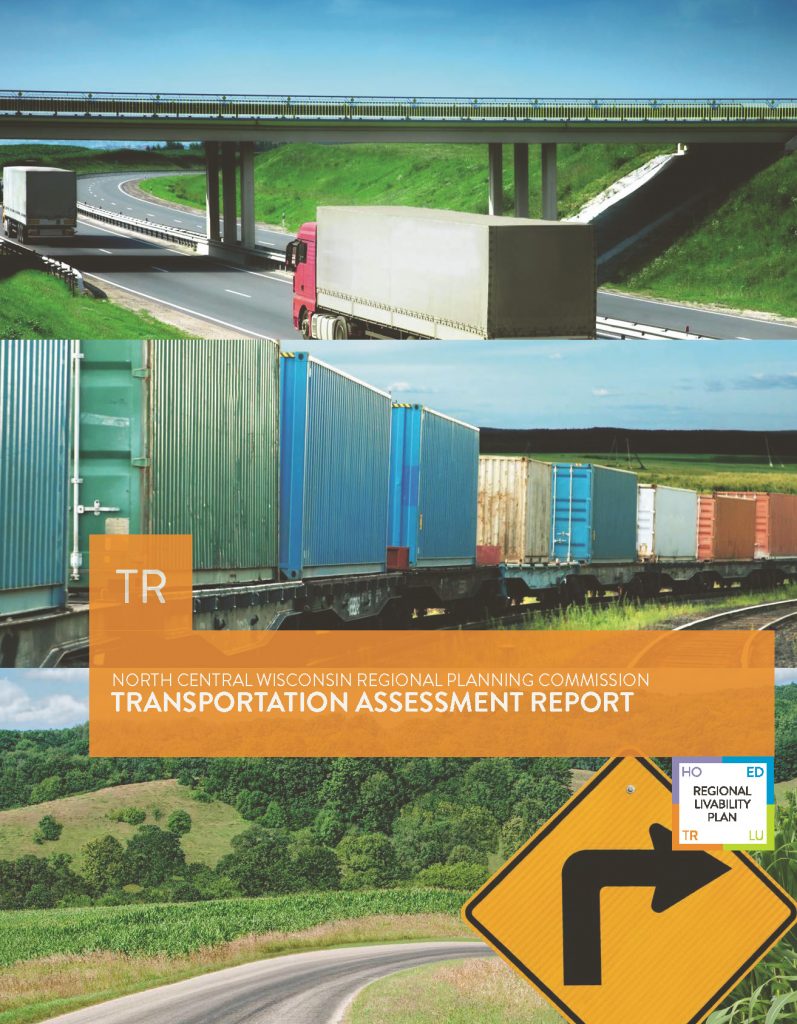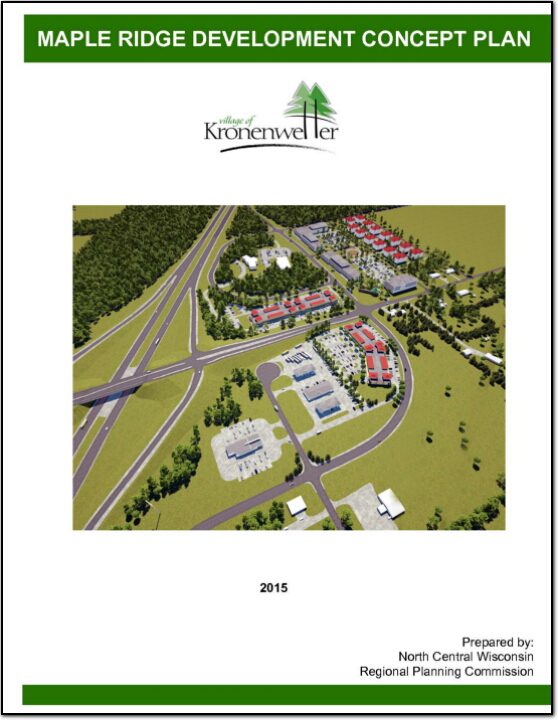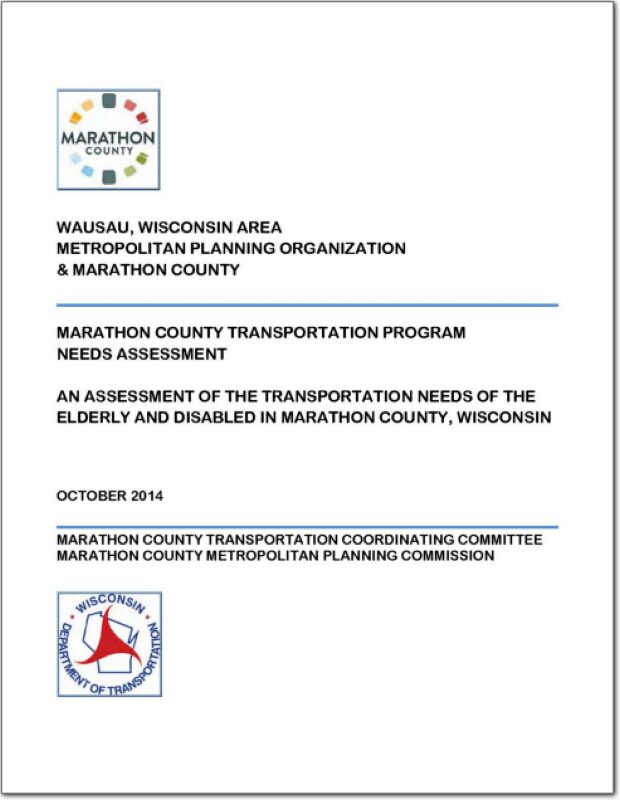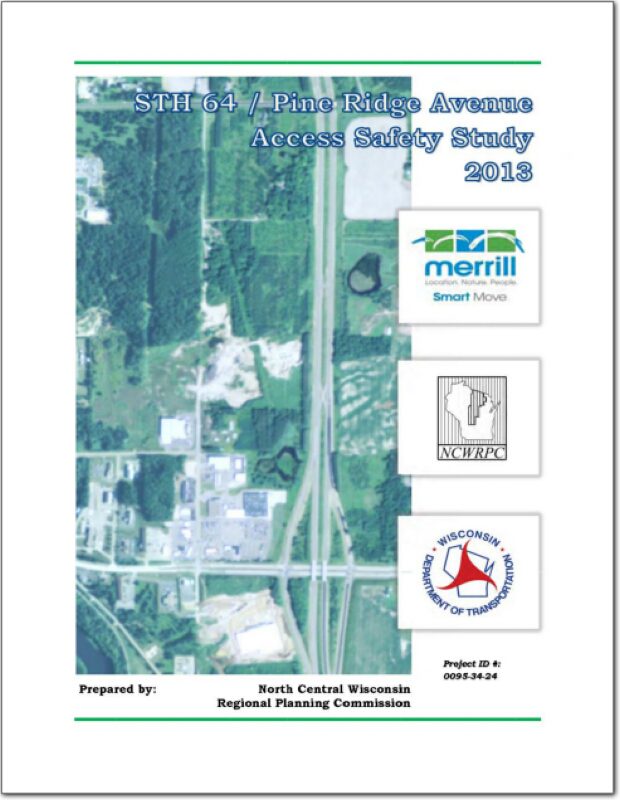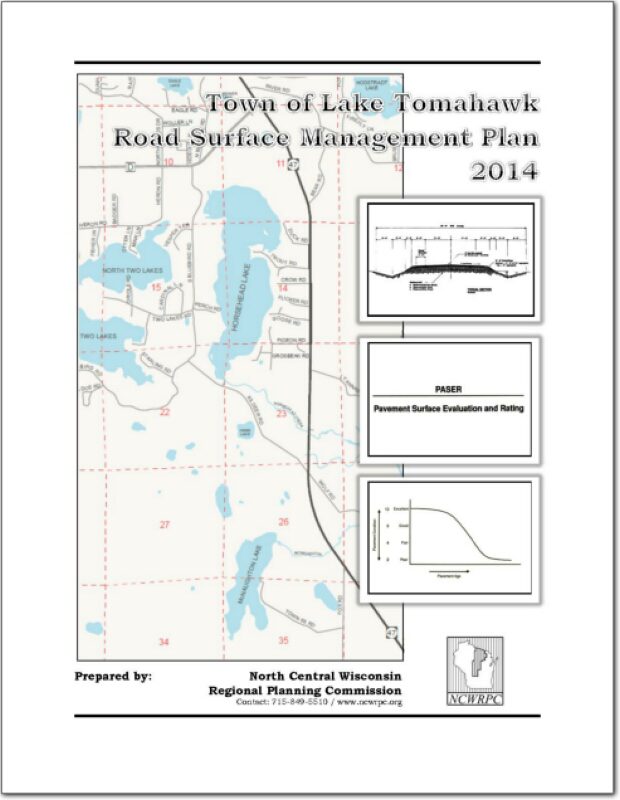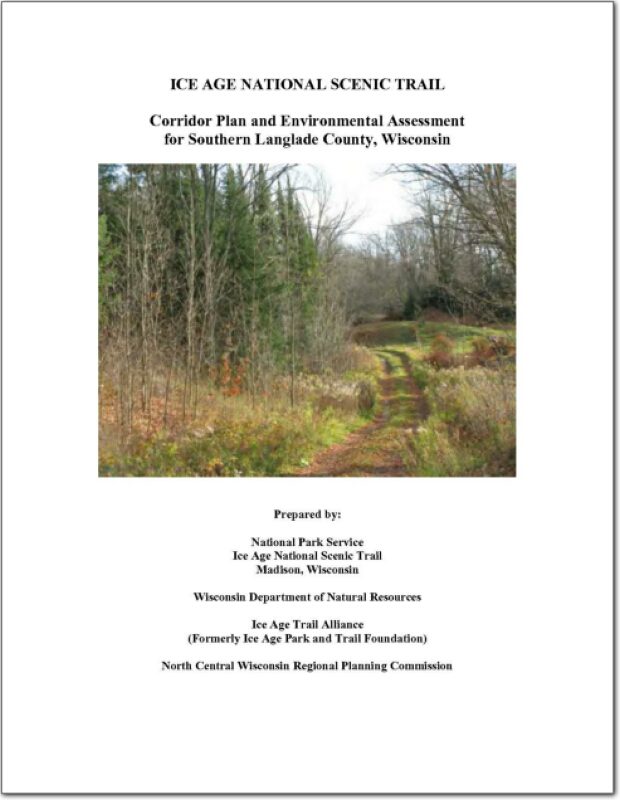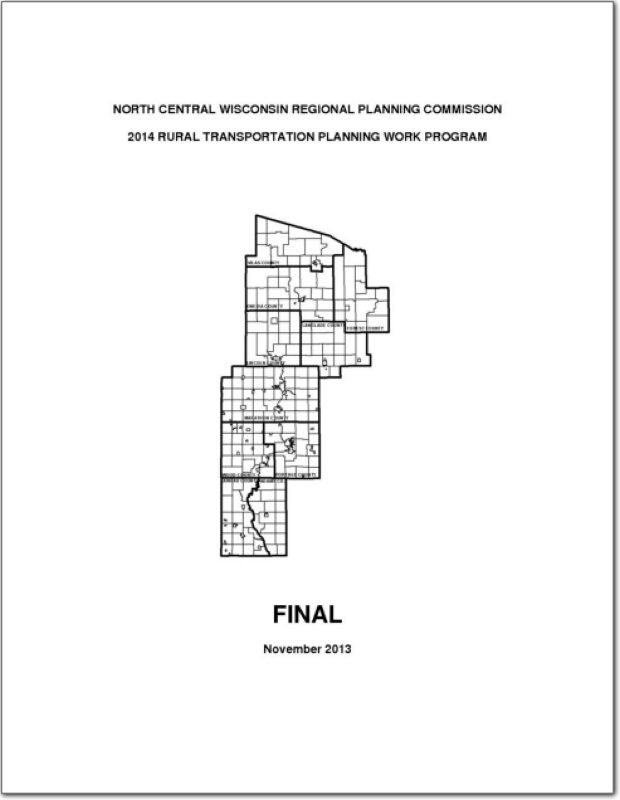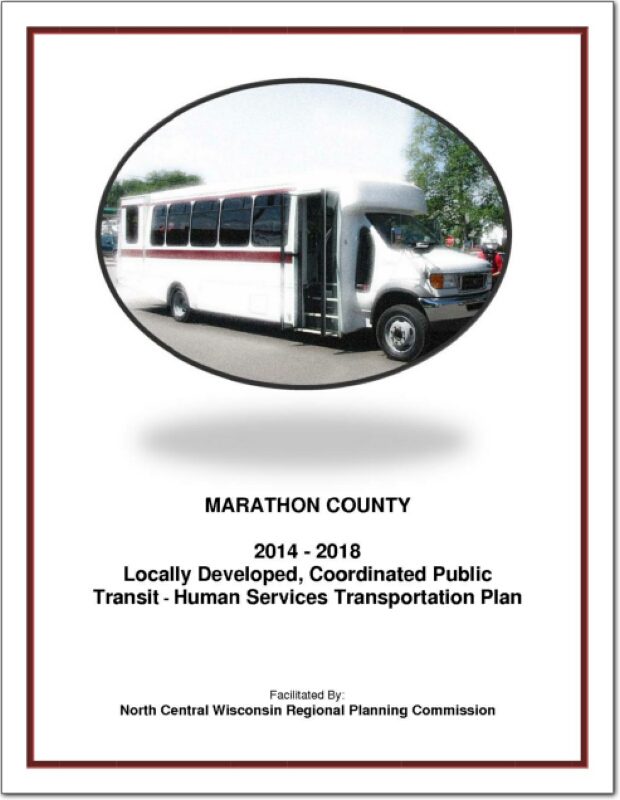The Transportation Assessment Report is one of four reports prepared as part of the overall Regional Livability Plan effort undertaken by the North Central Wisconsin Regional Planning Commission. Each Assessment Report focuses on the foundational topics of Housing, Economic Development, Transportation, and Land Use. These four reports along with demographic data will form the basis of the overall North Central Wisconsin Regional Livability Plan.
Transportation is a crucial component of livability and provides a basis for the formulation of policy to coordinate transportation facilities with a sustainable pattern of development. This Assessment Report examines transportation on a regional scale. The existing network, from roads to rails, needs to be coordinated to maximize efficiency for the overall system. The connection between home and work is an important part of any transportation system. A range
of transportation alternatives should be supported, including walkability wherever possible. Perhaps the greatest challenge in the North Central Wisconsin Region is in developing an efficient and cost effective rural transportation system to serve what is likely to be the continuing trend of development of second and retirement homes in amenity-
rich rural areas.
